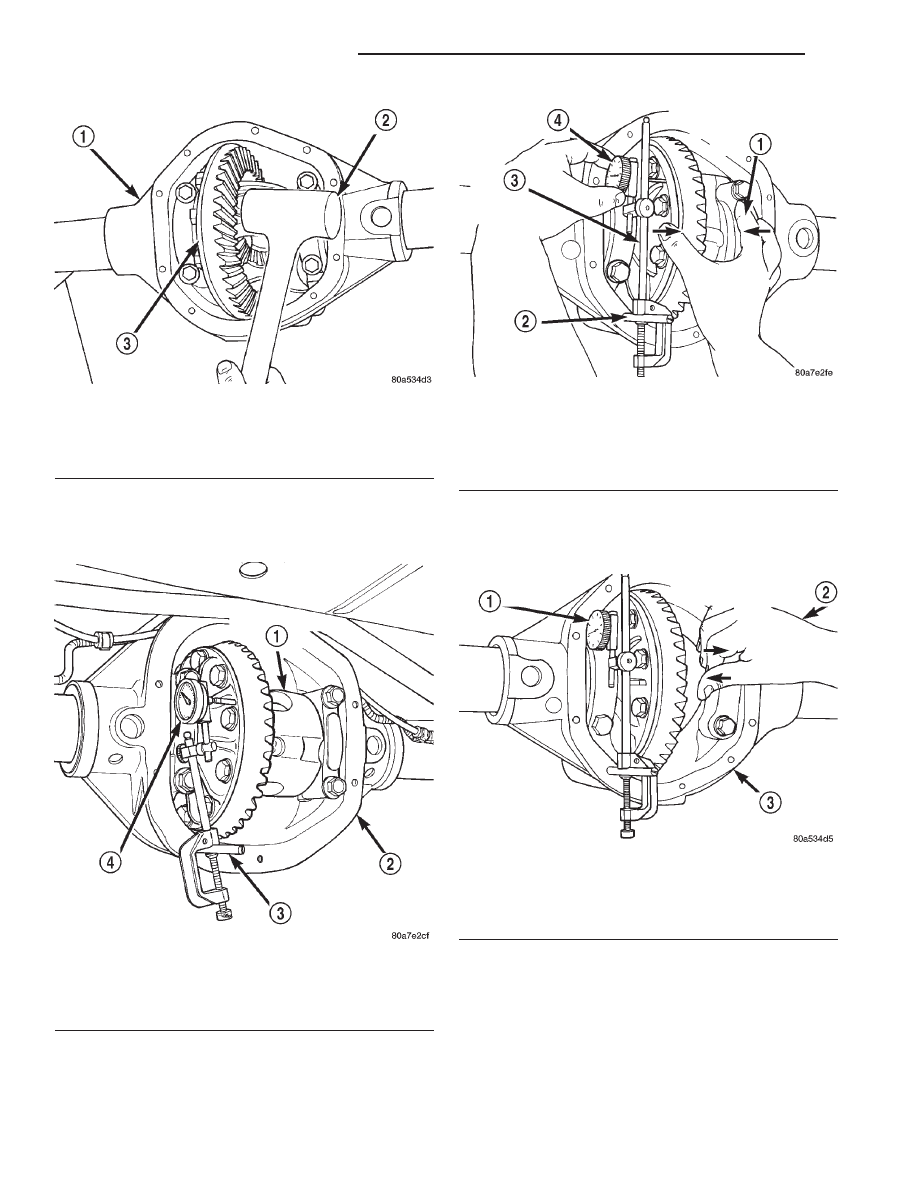Jeep XJ. Manual - part 26

(9) Attach a dial indicator C-3339 to guide stud.
Position the dial indicator plunger on a flat surface
between the ring gear bolt heads (Fig. 87).
(10) Push and hold differential case to pinion gear
side of axle housing (Fig. 88).
(11) Zero dial indicator face to pointer (Fig. 88).
(12) Push and hold differential case to ring gear
side of the axle housing (Fig. 89).
(13) Record dial indicator reading (Fig. 89).
(14) Add 0.008 in. (0.2 mm) to the zero end play
total. This new total represents the thickness of
shims to compress, or preload the new bearings when
the differential is installed.
(15) Rotate dial indicator out of the way on the
guide stud.
(16) Remove differential case and dummy bearings
from axle housing.
Fig. 86 Seat Ring Gear Side Differential Dummy
Side Bearing
1 – AXLE HOUSING
2 – MALLET
3 – DIFFERENTIAL CASE
Fig. 87 Differential Side play Measurement
1 – DIFFERENTIAL CASE
2 – AXLE HOUSING
3 – SPECIAL TOOL C-3288–B
4 – SPECIAL TOOL C-3339
Fig. 88 Hold Differential Case and Zero Dial
Indicator
1 – FORCE DIFFERENTIAL CASE TO PINION GEAR SIDE
2 – SPECIAL TOOL C-3288–B
3 – SPECIAL TOOL C-3339
4 – ZERO DIAL INDICATOR FACE
Fig. 89 Hold Differential Case and Read Dial
Indicator
1 – READ DIAL INDICATOR
2 – FORCE DIFFERENTIAL CASE TO RING GEAR SIDE
3 – AXLE HOUSING
3 - 54
TUBE, 181, AND 186 FBI AXLE
XJ
ADJUSTMENTS (Continued)